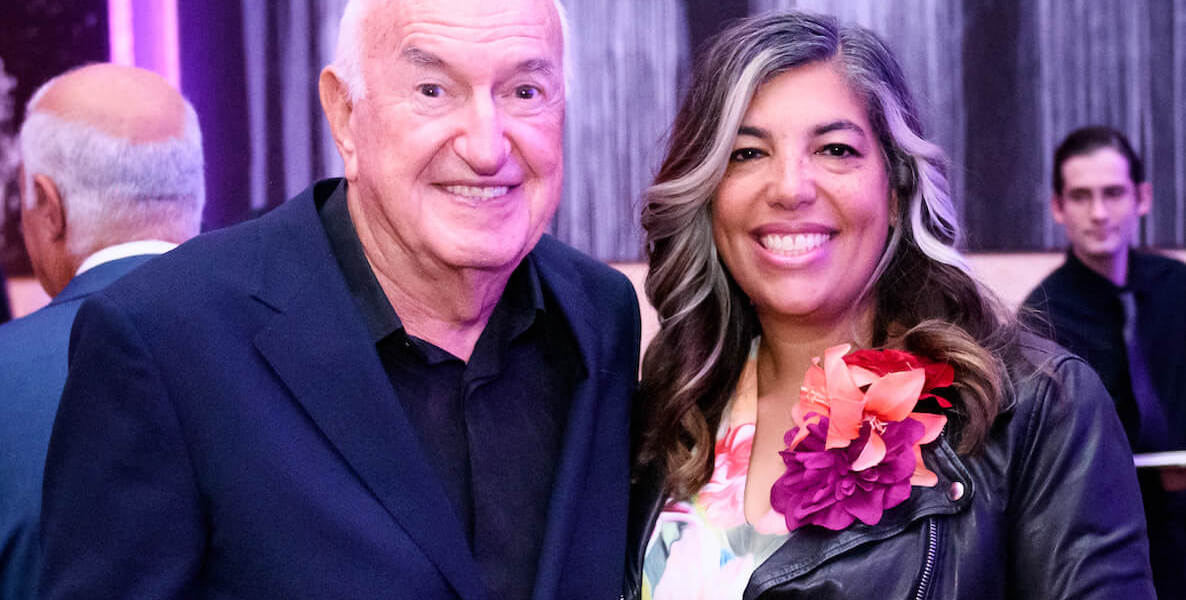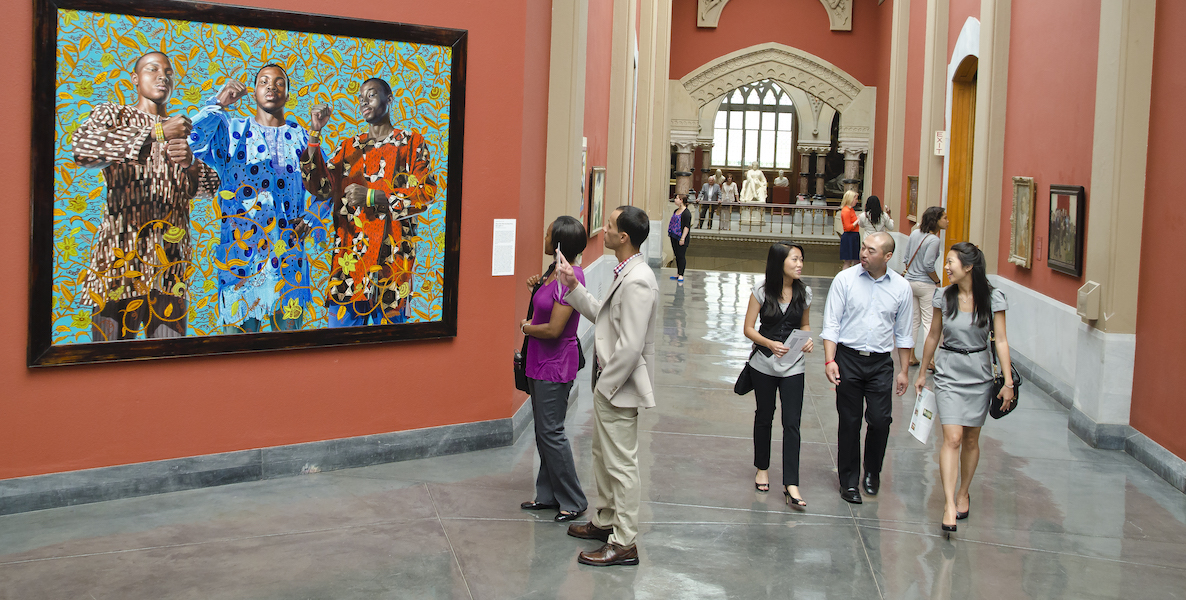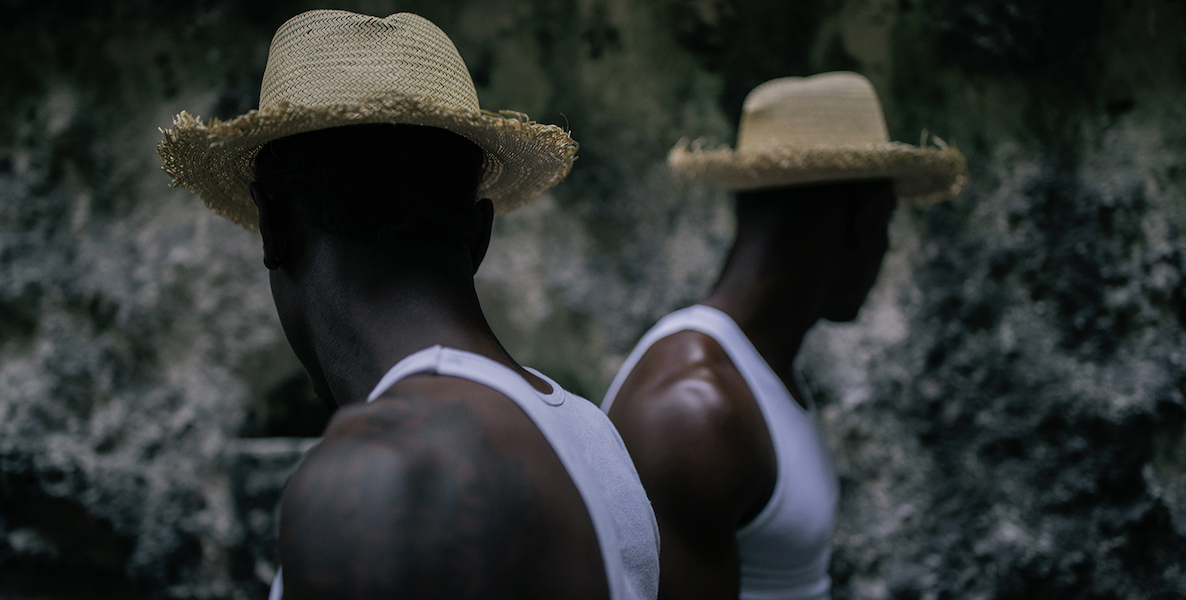For as long as art museums in this country have existed, they’ve had a problem.
Like so many institutions in the U.S., they’ve overlooked the contributions of African Americans. But just over a decade ago, in December 2008, a family in Miami set out to change that.
The Rubell family, led by husband and wife Don and Mera, and their son Jason, have amassed one of the most staggering personal art collections in history. And in 2008, the Rubells debuted “30 Americans,” a collection of 260 contemporary works by African-American artists like Jean-Michel Basquiat, Kara Walker, and Kehinde Wiley.
![]() Since its Miami opening, the exhibition has traveled the country, astonishing audiences and driving up museum attendance. And in October, “30 Americans” arrived in Philly at the Barnes Foundation, where it will stay until January 12.
Since its Miami opening, the exhibition has traveled the country, astonishing audiences and driving up museum attendance. And in October, “30 Americans” arrived in Philly at the Barnes Foundation, where it will stay until January 12.
The Barnes exhibition, which features nearly 60 pieces from the collection, was curated by Gwendolyn DuBois Shaw, PhD. Dr. Shaw is associate professor of History of Art at The University of Pennsylvania. In May 2019, she was appointed senior historian and director of history, research, and scholarship at the Smithsonian’s National Portrait Gallery—she is the first woman and the first African American to hold this senior position.
Citizen writer-at-large Jessica Press sat down with Dr. Shaw to talk about art as activism, the importance of diversifying art collections, and how Philly can rally behind overlooked creators in the art world, and beyond.
Would you rather hear the audio version of this story? Go here.
Jessica Press: Well, thank you so much for having us here today. We’re really excited. For our listeners who may not be aware of “30 Americans,” can you give the broad overview of what the exhibit is?
Gwendolyn DuBois Shaw: So it’s an exhibition of 30 American artists, all of whom happen to be African American. So that’s one of the ways that people tend to look at the show, is [that it’s] a show of 30 contemporary African-American artists.
JP: Can you talk about what the [Rubell family’s] vision for this particular exhibit was, and really the fact that they made sure to get the support of the artists that they were featuring in the collection?
GDS: The Rubells have been collecting since the 1980s. They started during this kind of boom of contemporary art; artists like Jean-Michel Basquiat, Jeff Koons were really popular in the 1980s and they started collecting at that moment. And over the years, they wanted to share their work with the public. And in the early 2000s, they started a museum of their own in Miami. And they began to travel portions of the collection to smaller museums around the country.
They wanted to do a show that focused on the Black artists that they had been collecting. But that’s kind of a complicated thing to organize an exhibition just around race or gender if it’s not a white male race and gender that you’re organizing around—because that happens all the time, and nobody takes any notice of that! But they wanted to focus on these Black artists, some of whom were still living and others who had passed on. So they thought it was important to reach out to those artists and see if they felt comfortable being in an exhibition that did have race as one of the organizing factors.
And it turned out that all the artists they spoke with were really excited about that opportunity, because the artists that they were going to be in company with, on the walls of the gallery and [the] sculpture displayed in front of their pieces, were artists that they respected and admired and often were friends with or had been influenced by. So there were a lot of natural connections between the works and between the artists themselves that made doing the show a much more comfortable situation. Really, it’s just a tremendous success story, driven in small part based on the show but also just on the changing interest in the art world. Contemporary art is incredibly popular now, as is art that tells us something different and shows us multiple viewpoints and multiple stories, and you really get that from “30 Americans.”
JP: You talked about how the show is now just over a decade old. I think many would argue that a show like this is even more necessary than when it first debuted, insofar as stimulating essential conversations about race in the arts, and beyond. Can you talk a little bit about that, about how people’s reception to the show has changed over the last 10 years and why it’s perhaps more meaningful than ever for it to be out here in the world right now, in 2019 going on 2020?
GDS: As it’s traveled around the nation, it’s transformed the institutions and the communities that it’s come in contact with. Many of the museums where it’s been shown, it has acted as a catalyst for the curators, for the directors of those museums to begin collecting contemporary art by Black artists, because people will come out for it. And it should not be a surprise. If you diversify your offerings, if you’re not doing an Impressionist show every year—and listen, the Barnes has an amazing Impressionism collection, people will always be coming here for Renoir and Matisse and all of these great early modern European artists. But they also want to see different things that they haven’t seen before.
As it’s traveled around the nation, “30 Americans” has acted as a catalyst for museum curators to begin collecting contemporary art by Black artists—because they see that people will come out for it.
And so when the exhibition has gone to some institutions, it’s really radically transformed what they’re doing. In Detroit, for example—like Philadelphia, Detroit is a majority Black city. Philadelphia, 40 percent black. And in Detroit they had not been collecting contemporary African-American art, because they didn’t see the value in doing that despite the fact that they’re in a city that is majority Black. So they were surprised there that folks came out for it. And they want to keep people coming back. And so you have to give people variety. And this show has really done that.
JP: So Baltimore Museum of Art made headlines recently for committing to only acquiring works by women in the coming year, which is really exciting. What other sorts of initiatives or strides do you think museums can be making to broaden what they have on offer and what they’re bringing to the public, who clearly wants different experiences?
GDS: Yeah, well, I think what Baltimore did was really bold. It’s going to be hard for them! It’s going to be hard for them because museums, there are a lot of demands put on them and what if there’s a really amazing gift that comes their way, and it’s by a male artist? Are they going to say no, are they going to say let’s wait until next year? I don’t know. But it’s an interesting way to approach the deficit, the paucity, of women artists in their collection to say hey, we’re going to really focus on this right now. And for the director and the curators to have made that move, I say more power to you. Just go for it.
I think that museums themselves have to really radically diversify their staff at higher levels—whether it’s the executive level, the curatorial level. Many museums throughout the country have black professionals on staff but not spread throughout the departments and this is something that’s really important. If institutions want to change the makeup of their audiences, they also have to change the makeup of their employees. And it’s up to those directors and to those managers to do that. I’ve been in the museum field for over 25 years and I’ve barely seen the needle move on this, which is quite depressing on one level, but I am an inveterate optimist and I think that one of the ways that—as a scholar, as an art historian, as a professor of the history of art—that I can do that is by partnering with different institutions, in this case partnering with the Barnes to work on this exhibition; when these opportunities present themselves, we have to jump on them, we have to make them happen and really get the word out so that folks don’t miss the opportunity.
JP: Now, you’ve alluded to the fact that you grew up in an activist family, and I’d love if you could talk about art as activism and social commentary, and how that’s so meaningful with this particular exhibition.
GDS: I think with African-American culture and history in this country, so much of it tends to get tied to issues of representation because racial oppression is often linked to negative representation. So for Black activists, for Black intellectuals, representation, how we are seen, how we represent ourselves, is really important. And so the history of African-American art was something that I grew up with in my household, going to see exhibitions with my mom, with my dad [who] was an artist and a photographer. And so it was kind of a natural part of my life. But it wasn’t until I started working in museums in the late ’90s, middle ’90s, that I realized that it was not a part of the general museum scene or the art history scene. That’s changed a little bit over the years, but I think it’s a really big issue. And it’s one of the ways that people are able to be viewed as human and have value is if you have culture.
Through January 12, general admission tickets $25, the Barnes Foundation, 2025 Benjamin Franklin Parkway.
Header photo: Gwendolyn DuBois Shaw and Don Rubell | Courtesy @bfa and @darian_chloe




